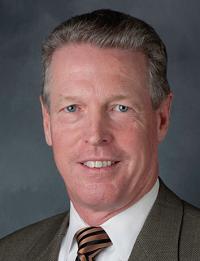We assembled a panel of industry experts to tackle this month’s question.
Here’s what they had to say:

Gordon Gemma, director of investments and operations, Panepinto Properties (Jersey City)
In April of this year, published reports said that Jersey City had over 37,000 multifamily residential units in the pipeline and more than 9,000 under construction. Development activity, which was once primarily limited to the downtown and Journal Square areas, is now citywide. Lenders indicate they have too much exposure within this asset class and have begun to require more equity or simply not lend at all. Couple these concerns with the perception we are near or at the peak of a cycle, developers who specialize in construction of high-rise multifamily product that have a long lead time, have to be wary of the market’s ability to continue to absorb product at its current pace and price.
Given these factors, land price and terms must be appropriate such that any project can be held for a reasonable period of time. This requires patience, sufficient capital and the ability to walk away today, with the understanding a project may be cheaper tomorrow. Once construction actually commences there needs to be an equity reserve in the event absorption takes longer than anticipated or to fund a repositioning of the asset. Now may be the time to go back to basic fundamentals of investing by entering the waters cautiously when it may be at its highest, so as not to be swept out to sea when the tide recedes.

Ken Orchard, New Jersey regional president, Tristate Capital (Edison)
At TriState we begin all lending opportunities by first looking at the sponsorship. We like to work with professional real estate developers and investors that have the experience and financial capacity to see a project through to a successful conclusion.
Good sponsors have the ability to work through potential problems and keep projects on track. After all, as a bank we are the lender and not the investor, and the last thing we want to do is have to take over the development of a project. Assuming we like the sponsorship, we will then look at the specific opportunity being presented: the economics, location, equity, etc.
While there are some issues having been raised as to possible overbuilding in multifamily, especially nationally, New Jersey has a fundamentally strong market, low vacancies and, I venture to say, most lenders have lost very little making loans to experienced multifamily developers over the past few decades.

Joseph A. Del Duca, partner and general counsel, Walters Group (Barnegat)
The three biggest concerns are zoning, environmental and market constraints. Regulatory issues are huge, especially in the Pinelands region or where CAFRA applies.
We’ve found that for projects to succeed, the key is to cultivate good working relationships with town officials where you build. Once you have all the pieces in place, the financing is not that hard to get, depending on the type of project you’re building.
We just held a grand opening for an income-restricted community in Lacey that was awarded funds through the (Low-Income Housing Tax Credit) program. We knew that funds were available, and we competed for them and won. It took five years for Cornerstone at Lacey to get underway, but we knew the demand was there for this type of housing.










